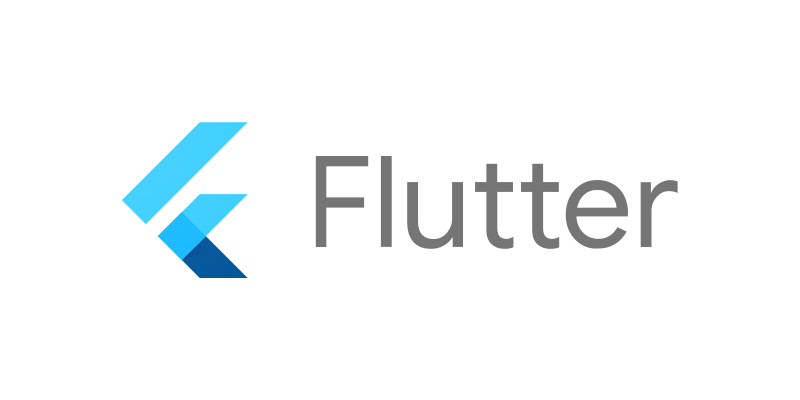

Published By: Admin
Posted On: 22 Jul 2021
Flutter has taken the app-world by storm. With over 50,000 applications on the Google Play-store, this five year old app-development space has not only announced its arrival in the cross platform app development space, but has also proved a strong contender to React Native.
With cross platform applications gaining momentum with app owners, supporting tech for them have emerged in the app development space – of which Flutter has proven to be both easy to use and tremendously flexible.

Powered by Google, Flutter is an open-source mobile SDK framework, based on an object oriented programming language called Dart, for both iOS and Android. Now you can create native look and feel applications with UI elements built in, which allows speed and scale, while keeping a budget in control.
However, like all developmental frameworks, there are several pros & cons of using Flutter for Mobile App development.
The fact that flutter is extremely popular should automatically underscore its ease of use and flexibility. The reasons for its extensive usage though could be roughly summed up as follows:
This according to leading experts from a Flutter app development company in Hyderabad, is one feature that Flutter offers setting it apart from all peers. Even older versions of iOS and Android are supported by Flutter which means your application has a wider reach.
Gone are the days when you had to choose between where you’d want to launch your application on. Maybe you have a budget that allows for development and maintenance only on Android, so iOS launch takes a backseat. Flutter solves this hiccup by allowing developers to use the same code base for both Android and iOS platforms. This not only saves time, but reduces development and maintenance costs considerably. It also offers several built in widgets, tools and themes that developers can use to build on.

Flutter offers built in widget options like the popular material design widget or Cupertino that help build super-fast applications, and also customize the widgets to suit specific requirements. You can do so through adaptable modules that can help customize the widget, which means you have a ready wire-frame of sorts that you can build on, make changes and bring the app to market in record time.
Flutter comes with a hot reload feature, that enables developers to make, view and review changes they make in their code instantaneously, in real time. This is extremely useful when you want an update on your app’s UI/UX or want to fix bugs, or make design changes to improve the app aesthetic. Dynamic mobile app development with flutter is faster, scalable and explorative – with the development team being able to add, check and experiment with new ideas.
When you are writing the same code for Android and iOS, that is dynamic, an obvious side effect is that it reduces time, costs and is more productive. The single code-base feature means your QA team can be faster, better and if you want special attention to certain areas in terms of testing, you could alienate those blocks of code to conduct special test runs.
But like every coin has two sides, Flutter has several disadvantages too:
Despite flutter having an extensive library to boast of, React Native beats it in terms of diversity of library functions, opines a top Web development company in Hyderabad. But this could be due to the fact that Flutter is just five years old in the development space, while React Native has been around for quite some time. Developers also have complaints about development support from Google in terms of response time or it meeting expectations. But this is a work in progress, and perhaps with time Flutter will soon get there!
Complex
Flutter is inherently designed to power pack everything in, which means, while it does make your life easier in terms of speed to market, you might need to juggle between menus, elements and navigation through the framework in general. Most developers in Flutter give the navigation a thumbs down.
This one comes across as one of Flutter’s biggest drawbacks, according to a leading Flutter app development company in Hyderabad. Developers feel that iOS app design with Flutter is slightly lower in standard as compared to Android, in terms of customization, and flexibility.
Flutter, given its age has not reached its full potential. So when it comes to development of complex projects, Flutter may be disappointing. However, for businesses looking to establish an online presence, build brand through visibility, or start-ups, this Flutter provides good solutions. It also works great when you want a strategy where you want to test a new idea Flutter would work well.
The fact is start-up or not, developing two separate applications can be quite a daunting task, and start-ups with limited resources find a blessing in cross platform development solutions like Flutter. There is code reuse, better MVP, faster and a superb brand experience. Maybe, when you want to expand, establish your idea, you can look to carve a niche and develop a more sophisticated native app instead.
Today, start-ups and established firms alike are turning to flutter just because of the speed with which it can deliver a MVP that supports multiple platforms.
Flutter has various advantages, and more pros to its credit when you are looking at building progressive and instant mobile applications, or integrating apps across platforms. It has good responsiveness, and is wonderful to scale if you are using cross functionality applications like IoT or connecting household appliances or wearable devices using Bluetooth. This is a strong contender and has been offering firm competition to React Native!